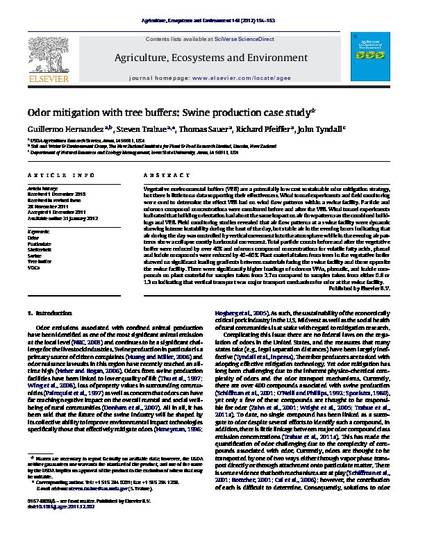
Vegetative environmental buffers (VEB) are a potentially low cost sustainable odor mitigation strategy, but there is little to no data supporting their effectiveness. Wind tunnel experiments and field monitoring were used to determine the effect VEB had on wind flow patterns within a swine facility. Particle and odorous compound concentrations were monitored before and after the VEB. Wind tunnel experiments indicated that building orientation had about the same impact on air flow patterns as the combined buildings and VEB. Field monitoring studies revealed that air flow patterns at a swine facility were dynamic showing intense instability during the heat of the day, but stable air in the evening hours indicating that air during the day was controlled by vertical movement into the atmosphere while in the evening air patterns show a collapse mostly horizontal movement. Total particle counts before and after the vegetative buffer were reduced by over 40% and odorous compound concentrations for volatile fatty acids, phenol and indole compounds were reduced by 40–60%. Plant material taken from trees in the vegetative buffer showed no significant loading gradients between materials facing the swine facility and those opposite the swine facility. There were significantly higher loadings of odorous VFAs, phenolic, and indole compounds on plant material for samples taken from 2.7 m compared to samples taken from either 0.6 or 1.3 m indicating that vertical transport was major transport mechanism for odor at the swine facility.
Available at: http://works.bepress.com/john_tyndall/20/

This article is from Agriculture, Ecosystems & Environment 149 (2012): 154, doi:10.1016/j.agee.2011.12.002.